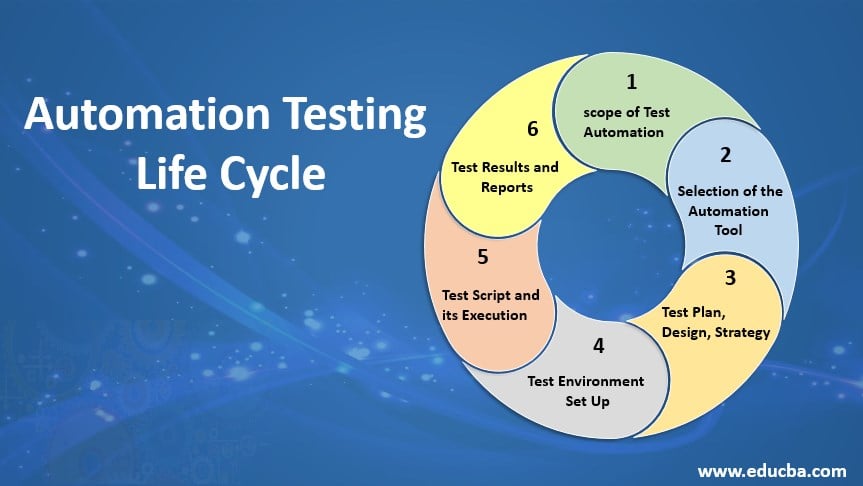Mastering Automation Testing: Tools, Techniques, and Benefits
Mastering Automation Testing: Tools, Techniques, and Benefits
Blog Article
From Handbook to Automated Testing: A Comprehensive Guide to Transitioning Smoothly and Effectively
In the realm of software program testing, the shift from handbook to automated procedures has become a significantly important change for organizations looking for to enhance effectiveness and accuracy in their testing techniques. The trip from guidebook to automated testing is not without its obstacles, but when approached purposefully and with a clear plan in mind, the advantages can be substantial.
Advantages of Automated Evaluating
Automated screening offers many benefits, enhancing performance and accuracy in software application growth processes. One primary advantage is the substantial reduction in testing time. Automated examinations can be run at the same time on numerous devices and operating systems, significantly quickening the testing stage compared to hands-on screening. This increased efficiency enables for faster responses on the top quality of the software, allowing developers to determine and resolve issues immediately.
In addition, automated screening guarantees a greater degree of accuracy in spotting problems. Consistency in screening is also enhanced, as automated tests perform the very same actions precisely each time they are run.
Picking the Right Devices

First of all, examine your objectives and demands. Comprehend the range of your project, the technologies involved, and the capability of your team. This analysis will aid you determine the attributes and capabilities you call for in your testing tools.
Secondly, take into consideration the compatibility of the devices with your existing systems and procedures. Seamless assimilation with your existing software program growth lifecycle is necessary to make certain a smooth transition to automation.
Furthermore, evaluate the scalability and adaptability of the tools. As your testing requires develop, the devices must be able to adapt and fit changes effectively.
Last but not least, element in the assistance and neighborhood around the tools. When executing automated screening, robust assistance and an active user area can offer valuable sources and assistance. By meticulously thinking about these facets, you can choose the right devices that align with your needs and set the stage for an effective shift to automated screening.
Creating Effective Test Manuscripts

When crafting test scripts, it is necessary to take into consideration the particular needs of the software application being tested and make sure that the scripts attend to all crucial capabilities. Clear and detailed calling conventions for test scripts and examination cases can improve readability and maintainability. In addition, incorporating mistake handling devices within the test scripts can aid in identifying and dealing with concerns immediately.
In addition, arranging examination manuscripts into modular elements can enhance reusability and scalability, reducing redundancy and enhancing effectiveness in more examination manuscript upkeep. Routine evaluations and updates to check scripts are important to maintain rate with evolving software application demands and capabilities. By adhering to these principles, testers can create reliable and durable test scripts that contribute considerably to the success of automated testing processes.
Integrating Automation Into Workflows
Effective assimilation of automation devices right into existing operations streamlines procedures and boosts performance within software development cycles. When incorporating automation right into operations, it is crucial to identify repetitive jobs that can be automated to conserve time and reduce human error. By seamlessly integrating automated screening devices like Selenium or Appium right into the software application development lifecycle, groups can attain faster responses on code modifications, causing quicker insect detection and resolution. This integration allows for continual screening throughout the advancement process, ensuring that any concerns are recognized early, leading to higher software program top quality. Additionally, automation can be utilized to activate tests automatically after each code devote, supplying instant recognition and liberating testers to concentrate on even more complicated situations. Proper assimilation of automation devices requires cooperation between development, screening, and operations groups to establish a unified operations that enhances efficiency and efficiency in delivering premium software application products.
Guaranteeing a Smooth Change
Successfully transitioning to automated testing includes careful preparation and careful execution to lessen disturbances and take full advantage of effectiveness in the software program advancement procedure - automation testing. To read here make certain a smooth transition, it is vital to begin by carrying out a detailed assessment of the current testing processes and identifying areas where automation can bring the most significant benefits. Engaging with all stakeholders at an early stage while doing so, including designers, testers, and job managers, is important for gathering support and buy-in for the automation initiative
Communication is key during this transition stage. Clear interaction of the objectives, advantages, and assumptions of automated screening assists to handle any resistance or issues that may arise. In addition, giving ample training and sources for staff member to upskill in automation tools and strategies is vital for ensuring an effective change.

Conclusion
Finally, transitioning from handbook to automated testing uses countless advantages, consisting of increased efficiency and reliability. By selecting the appropriate tools, writing effective test scripts, and integrating automation seamlessly into workflows, companies can ensure a effective and smooth shift. It is necessary to welcome automation as a beneficial property in software program screening processes to improve overall quality and performance.
In the world of software application testing, the shift from manual to automated procedures has become an increasingly vital change for companies seeking to enhance performance and precision in their testing techniques. Automated examinations can be run all at once on several devices and running systems, drastically speeding up the screening phase compared to hands-on testing. Uniformity in testing is also boosted, as automated tests execute the very same steps Extra resources specifically each time they are run.To make sure the successful execution of chosen testing tools, the development of effective examination scripts plays a critical function in validating the capability and performance of automated procedures - automation testing. By complying with these concepts, testers can produce reliable and robust examination manuscripts that contribute dramatically to the success of automated testing procedures
Report this page